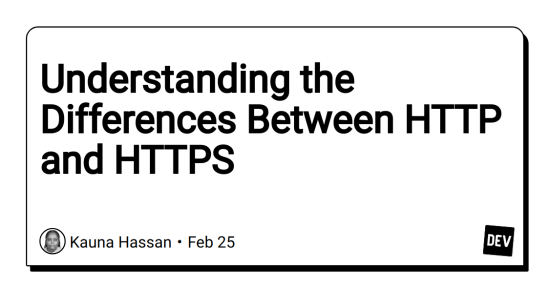As the world becomes more connected, the need for secure communication between web servers and clients grows. The Hypertext Transfer Protocol (HTTP) and the Hypertext Transfer Protocol Secure (HTTPS) are two widely used protocols for web communication. In this article, we’ll look at the differences between HTTP and HTTPS, as well as why HTTPS is becoming the preferred option for web developers and users.
What is HTTP?
HTTP is a protocol that governs data transmission over the internet. It serves as the foundation of the World Wide Web, allowing data to be transmitted between a web server and a client (usually a web browser). Because HTTP is a text-based protocol, the data being transmitted is in human-readable format.
HTTP is a request-response protocol that runs on top of the Transmission Control Protocol (TCP). An HTTP request message is sent when a client (web browser) sends a request to a server. The server then sends an HTTP response message in response. These messages include information such as the request type, headers, and body (if applicable).
What is HTTPS?
HTTPS is an encrypted version of HTTP. It encrypts data transmitted between a web server and a client by combining HTTP and Secure Sockets Layer (SSL) or Transport Layer Security (TLS) protocols. HTTPS encryption is used to protect sensitive data such as passwords, credit card numbers, and other personal information.
HTTPS works similarly to HTTP, with the main difference being that the data sent between the server and client is encrypted. This encryption aids in preventing unauthorized access to sensitive data.
The Differences Between HTTP and HTTPS
Encryption
Encryption is one of the primary distinctions between HTTP and HTTPS. HTTPS uses SSL or TLS to encrypt data, making it far more secure than HTTP. Data is encrypted before being sent over the internet when transmitted via HTTPS. This encryption aids in the prevention of unauthorized access to sensitive data such as credit card numbers and passwords.
Certificate Authentication
Certificate authentication is another distinction between HTTP and HTTPS. When a web browser connects to a web server via HTTPS, the server sends the browser a digital certificate. This certificate contains server-specific information, including the server’s public key. This certificate is then used by the browser to establish a secure connection with the server.
Port Number
HTTP employs port 80, whereas HTTPS employs port 443. This means that when you visit a website via HTTP, the URL begins with http://, whereas URLs via HTTPS begin with https://.
Performance
Because of the additional overhead of encrypting and decrypting data, HTTPS is generally slower than HTTP. However, advances in the SSL and TLS protocols have significantly reduced this overhead, allowing HTTPS to be much faster than it was previously.
Conclusion
Finally, HTTPS is quickly becoming the preferred protocol among web developers and users. It provides more security than HTTP, making it an excellent choice for websites that send sensitive data. While HTTPS is generally slower than HTTP, the difference in performance is negligible, making it a viable option for all types of websites.
As a developer, you must understand the distinctions between HTTP and HTTPS and use HTTPS whenever possible. You can help to secure your users’ data and build trust with your audience by using HTTPS.






noter onaylı çeviri